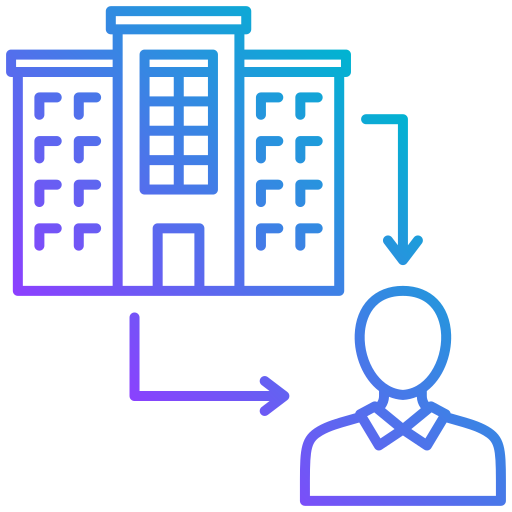In today’s fast-paced, tech-driven world, the methods we use to gather information have changed dramatically. Yet, despite all the advancements, one tried-and-true technique continues to hold its ground in the world of market research: CATI, or Computer-Assisted Telephone Interviewing. Though it might seem old-fashioned compared to the latest digital tools, CATI remains a vital method for gathering reliable and valuable data. But why does CATI still matter in 2024? Let’s take a closer look at its evolution and ongoing relevance.
The Birth of CATI: A Step Forward in Telephone Surveys
To understand why CATI is still important, we need to look at where it all began. Before CATI, telephone surveys were conducted manually. Interviewers had to keep track of questions, responses, and even skip patterns (where the next question depends on the answer to the previous one) by hand. This process was not only time-consuming but also prone to errors.
In the late 1970s, CATI was introduced as a solution to these problems. By using a computer to assist the interviewer, the process became much smoother. The software handled the questionnaire, automatically guided the interviewer through the correct sequence of questions, and recorded responses directly into a database. This innovation drastically reduced errors, improved data accuracy, and made the entire process more efficient.
CATI’s Rise to Prominence
CATI quickly became the gold standard for telephone surveys. Its ability to reduce interviewer error, speed up data collection, and handle complex questionnaires made it indispensable, particularly for large-scale studies. Over the years, CATI systems have become more sophisticated, integrating features like real-time data validation, quota management, and even multilingual support.
Despite the rise of online surveys and other digital methods, CATI has maintained its position, especially in areas where telephone contact is crucial. For instance, in B2B research, where reaching the right decision-makers often requires multiple call attempts and careful scheduling, CATI offers the flexibility and personal touch that online surveys simply can’t match.
Why CATI Still Matters in 2024
- Reaching the Unreachable: In 2024, not everyone is glued to their email or smartphone apps. Many people, particularly in older age groups or specific industries, still prefer or respond better to phone calls. CATI allows researchers to reach these individuals directly, ensuring that their voices are included in the data.Moreover, certain demographics, such as rural populations or older adults, may have limited access to the internet, making online surveys less effective. CATI bridges this gap by providing a reliable way to gather data from these hard-to-reach groups.
- Human Interaction Builds Trust: One of the biggest advantages of CATI is the human element. Respondents often feel more comfortable and willing to provide honest answers when speaking to a real person. This is particularly important in sensitive surveys where the respondent may be hesitant to share certain information online.The presence of a live interviewer also allows for real-time clarification of questions, ensuring that respondents fully understand what is being asked, leading to more accurate data collection.
- Complex Surveys Made Simple: Some surveys are too complex for self-administration. They might involve multiple skip patterns, complex response categories, or require detailed explanations of certain questions. CATI is ideal for these situations because the interviewer can guide the respondent through the survey, making sure that each question is answered correctly and completely.This is especially valuable in B2B research, where the survey might involve intricate topics that require clarification. The interviewer can provide the necessary context and explanations, ensuring that the respondent’s answers are as informed and accurate as possible.
- Higher Response Rates: Despite the convenience of online surveys, response rates can be quite low. People are bombarded with emails daily, and survey invitations are often ignored or deleted. CATI, on the other hand, tends to have higher response rates because it is more personal. A phone call is harder to ignore than an email, and once the conversation starts, people are more likely to complete the survey.Additionally, interviewers can follow up with non-responders, schedule call-backs, and handle objections in real-time, which further improves response rates and the overall quality of the data.
- Adapting to Modern Needs: While the core of CATI has remained the same, it has not stayed stagnant. Modern CATI systems are integrated with CRM tools, allowing for more personalized interactions based on previous respondent data. They also support multi-mode surveys, where respondents can choose to complete the survey over the phone, online, or even via SMS.This adaptability ensures that CATI remains relevant in a world where respondents expect convenience and flexibility. By offering multiple channels for participation, researchers can reach a broader audience and collect more comprehensive data.
- Quality Control and Real-Time Monitoring: One of the key strengths of CATI is the ability to monitor interviews in real-time. Supervisors can listen in on calls, review the data being collected, and provide instant feedback to interviewers. This level of quality control ensures that the data is accurate and that the interview process adheres to the highest standards.Additionally, CATI allows for the immediate detection of any issues or anomalies in the data, enabling researchers to address problems as they arise, rather than discovering them after the survey has been completed.
The Future of CATI
As we look to the future, it’s clear that CATI will continue to play a significant role in market research. While digital methods will undoubtedly continue to grow, the need for human interaction and the ability to reach diverse and hard-to-reach populations will keep CATI relevant.
Furthermore, as technology continues to evolve, so too will CATI. We can expect to see even more integration with other data collection methods, as well as improvements in automation and AI to assist interviewers in real-time. However, the core principles of CATI—reliability, accuracy, and the human touch—will remain unchanged.
Conclusion
In 2024, CATI is more than just a legacy system; it’s a vital tool that continues to provide immense value to researchers. Its ability to reach diverse populations, ensure data accuracy, and maintain high response rates makes it indispensable. As technology evolves, CATI will adapt, but its core strengths will keep it relevant for years to come.
So, while it might not be as flashy as the latest digital tools, CATI’s enduring importance in the world of market research is undeniable. For businesses and researchers alike, it’s a method that has stood the test of time—and will continue to do so in the years ahead.






